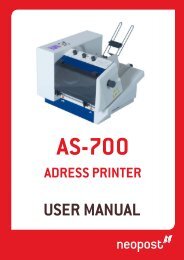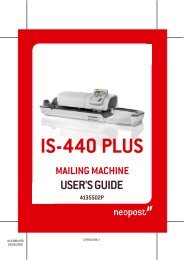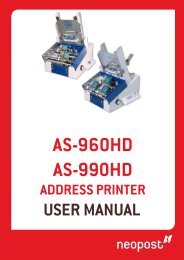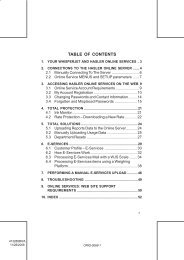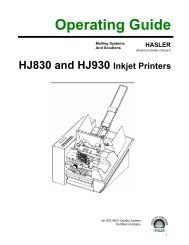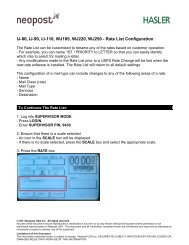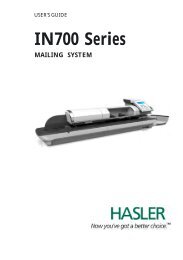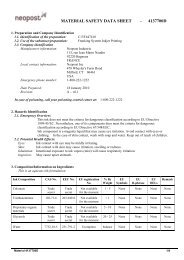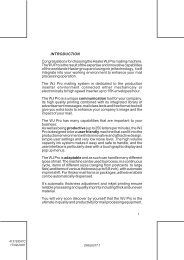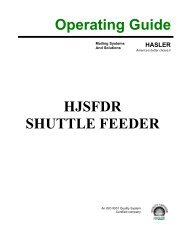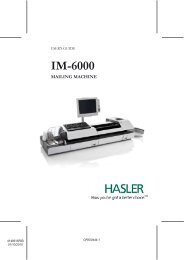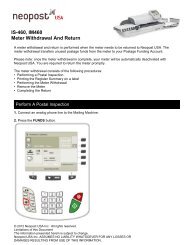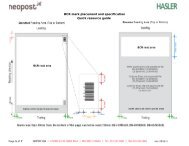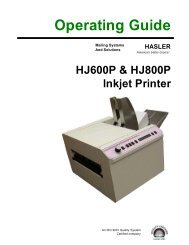AS-700, AS-710
AS-700, AS-710
AS-700, AS-710
Create successful ePaper yourself
Turn your PDF publications into a flip-book with our unique Google optimized e-Paper software.
For known print object thicknesses<br />
Scale value<br />
Max. Print object<br />
thickness<br />
Print object<br />
Print object<br />
thickness<br />
0 0.4 mm Standard paper 80g/m²<br />
Empty envelope<br />
1 0.8 mm Envelope filled with<br />
standard paper, folded<br />
3 times<br />
0.1 mm<br />
0.4 mm<br />
0.7 mm<br />
2 2.0 mm<br />
3 3.5 mm<br />
4 5.0 mm<br />
5 6.0 mm<br />
5.4.1.2 Setting the Media Width for the Sheet Separating System<br />
1. Turn both knurled knobs (1), each about 1-half turn away from the stop in<br />
the middle position (see HIllustration 5-25).<br />
2. Unlock the knurled knob by turning counter-clockwise (2), lift it up and lock<br />
it again by turning clockwise in a lifted position (see arrows).<br />
1 2 1<br />
1.<br />
2.<br />
3.<br />
Illustration 5-25: Setting the paper feed<br />
3. Place a piece of the medium to be processed (3) under the lifted separating<br />
fingers; two pieces, in the case of thin media. If the medium is so thin that it<br />
possibly will not be reached by two separating fingers, then under the free<br />
separating finger should also be placed a medium of the same thickness.<br />
Non-compliance with these steps can lead to premature wear<br />
(grooves) of the separation roller.<br />
35



